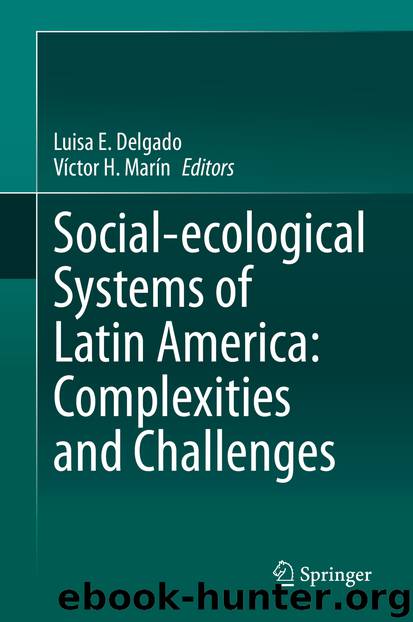Social-ecological Systems of Latin America: Complexities and Challenges by Luisa E. Delgado & Víctor H. Marín

Author:Luisa E. Delgado & Víctor H. Marín
Language: eng
Format: epub
ISBN: 9783030284527
Publisher: Springer International Publishing
2 Conceptual Frameworks
Human’s vertiginous technical, scientific, and information development, generated since the end of the Second World War, has brought contemporaneous society to face new dangers in daily life. Although human progress and knowledge advances have generated a new world of possibilities with supposed individual liberties unimaginable before, it is also true that new threats created by this development have emerged (López Cerezo and Luján López 2000).
The notion of daily life risk is increasingly present and the more we know it, the better we appreciate our ignorance. And, paradoxically, the more we try to control it, the larger is the generated risk in other parts of the system. Currently, people have lost a little of their illusions and glare about the technology. It perceives that they have not yet created the instrument for their freedom but new jails (Ellul 1964). Thus, we could say that today we live in what Beck (1993) called a high-risk society, referring to the fact that today greater damages are generated affecting most humankind. However, regarding risks we are all not equal. Or, paraphrasing George Orwell (1945: 112), we are all equal, but some are more equal than others.
This notion about the urgency of the risk is part of the contemporaneous society and consequently many academic debates, especially within the social sciences, are taking place in political and governmental agendas. Risk is also an issue in many scientific kinds of research in several knowledge areas given its great potential to understand catastrophes. Yet, may be due to its magnitude and spatial and cultural diversity, experts have not yet arrived at a unanimous definition regarding a general theory of the risk.
The likelihood of risk and dangerous exposure in our current society would allow us to successfully accomplish a specific understanding of our research. Our objective is to understand the basic principles that may clarify the issues that occurred in 2010 in our research area, the watershed of the Mundaú River, partly located in one of the less developed areas of Brazil: The State of Alagoas.
In order to understand the events that occurred, we will analyze the distinctions and similarities of the general concept also including its particular European colonization history. That means, what can we observe as particular characteristics of the researched region? Beck (1993: 19–20, 153) states that we are moving toward a new modernity where the axis structuring our industrialized society is no longer the classic good’s distribution, but the distribution of evils that means the distribution of risks.
However, the allocation of risks in Alagoas was never preceded by the allocation of goods or wealth . The total population of Alagoas, according to the 2000 Population Census, was of 2,822,621 people and in 2004 the Economically Active Population (EAP) was of 1,133,203 people (PNAD).1 de Carvalho (2005), analyzing the concentration of income within Alagoas EAP, highlights the polarization between a small group of people (4%) with more than five minimum salaries and a larger group with no income (20%) or surviving with up to two minimum salaries (66%).
Download
This site does not store any files on its server. We only index and link to content provided by other sites. Please contact the content providers to delete copyright contents if any and email us, we'll remove relevant links or contents immediately.
International Integration of the Brazilian Economy by Elias C. Grivoyannis(86600)
The Radium Girls by Kate Moore(11873)
Turbulence by E. J. Noyes(7901)
Nudge - Improving Decisions about Health, Wealth, and Happiness by Thaler Sunstein(7469)
The Black Swan by Nassim Nicholas Taleb(6953)
Rich Dad Poor Dad by Robert T. Kiyosaki(6324)
Pioneering Portfolio Management by David F. Swensen(6175)
Man-made Catastrophes and Risk Information Concealment by Dmitry Chernov & Didier Sornette(5883)
Zero to One by Peter Thiel(5643)
Secrecy World by Jake Bernstein(4599)
Millionaire: The Philanderer, Gambler, and Duelist Who Invented Modern Finance by Janet Gleeson(4306)
Skin in the Game by Nassim Nicholas Taleb(4128)
The Age of Surveillance Capitalism by Shoshana Zuboff(4126)
The Money Culture by Michael Lewis(4033)
Bullshit Jobs by David Graeber(4001)
Skin in the Game: Hidden Asymmetries in Daily Life by Nassim Nicholas Taleb(3873)
The Dhandho Investor by Mohnish Pabrai(3642)
The Wisdom of Finance by Mihir Desai(3612)
Blockchain Basics by Daniel Drescher(3435)
